By John W. Osborn, Jr.
A dangerous outlaw regime sits in power in Baghdad; the leader of one of the world’s superpowers decides it has to be removed at all costs; an army marches across the desert to topple it. The situation may sound familiar. The events of 2003 were in some ways similar to that of 1941. Sometimes history does seem to repeat itself.
Great Britain’s World War II march on Baghdad effectively began with its march on the city during World War I in 1917. After the war Britain was assigned responsibility by the League of Nations for what was then called Mesopotamia. Colonial Secretary Winston Churchill wrote, “We accepted before all the world a mandate for the country and undertook to introduce much better methods of government in place of those we had overthrown.”
Ever the realist, though, Churchill added: “The fact that we shall be calling into being an Arab administration in Baghdad makes it indispensable that we should treat the Arab question as a whole so far as it concerns British interests.”
The one solution to both problems was found in T.E. Lawrence’s old ally in Arabia, Prince Faisal. Churchill pressured British officials “to get Faisal on the throne as quickly as possible.” Although he was completely unknown in Mesopotamia, the British announced he had received 96 percent of the vote in a plebiscite. Then, in a dawn ceremony on August 23, 1922, with hardly a native in sight, the British installed him as king of a renamed Iraq (meaning well-rooted country).
“Much has been written,” comments Christopher Catherwood in Churchill’s Folly: How Winston Churchill Created Modern Iraq, “with what is probably a great deal of accuracy about the highly questionable way in which the referendum was conducted. Many chiefs simply gave the British the answer they wanted, and since ordinary people had next to no say in the process, we cannot say through a democratic process Faisal was the overwhelming and genuine choice of the Iraqi people.”
Nuri as-Said, who fought with Lawrence and Faisal in Arabia, was the country’s dominant political figure as minister of defense (1923-1930), prime minister (1930-1932), foreign minister (1933-1936), then again briefly prime minister (February-April 1940). But support for the British in Iraq extended nowhere beyond him and the monarchy. Nationalists were particularly incensed by the 1930 Anglo-Iraqi Treaty London forced on Baghdad as a precondition for ending the League Mandate. Under it, the British had effective control of Iraqi oil production and foreign policy, military bases for 25 years, and the right to transit troops from India during wartime. British power in Iraq was built on a foundation of desert sand, and when it suddenly shifted in 1941 a British army was again marching on Baghdad, including a politician and a new Lawrence to write about it.
“No Deadlier Foe of Islam Than Britain”
As the fateful year began, the monarchy was led by Emir Abdul Illah, regent since April 1939 for his six-year-old nephew, the namesake grandson of King Faisal. His father had died crashing his car after a late night of partying and drinking. The prime minister since April 1940 was Rashid ‘Ali al-Gaylani, a hard-line nationalist who had opposed the Anglo-Iraqi Treaty. Even more dangerous for the British was the group behind him, a quartet of powerful colonels known as the Golden Square. Their leader, Colonel Salah ad-Dinn as-Sabbagh, made plain their sentiments: “There is no more murderous wolf for the Arab and no deadlier foe of Islam than Britain….The Arabs have no future unless the British Empire comes to an end.”
Rashid ‘Ali refused to break diplomatic relations with Fascist Italy when it went to war with Britain as Nuri as-Said had done against Nazi Germany during his second brief term as prime minister. He held meetings with the Italian Minister, Luigi Gabbrielli, keeping out Nuri, who was foreign minister again. Colonel Salah ad-Dinn had his own meetings with Gabbrielli to request arms.
The regent finally reacted to such intrigues by dismissing the government on January 31, 1941. The Golden Square struck back two months later, seizing Baghdad in a bloodless coup, reinstating Rashid ‘Ali, and sending soldiers to kill Emir Abdul. They were too late. He had already fled, disguised as a woman, to a relative’s house. From there he phoned the American legation and the next morning was being driven west out of town under a rug in the American minister’s car. He reached the British air base at Habbaniya, 55 miles from Baghdad, and was flown to the British base at Basra, 300 miles to the south. From there, he reached final sanctuary with his own uncle, King Abdullah of Transjordan.
To the British ambassador, Sir Kinahan Cornwallis, Rashid ‘Ali reaffirmed the Anglo-Iraqi Treaty. Secretly, he asked Gabbrielli about possible air support and arms from the Italians and Germans. Cornwallis had not believed Rashid ‘Ali and, at his appeal, London reinforced Habbaniya with 400 men of the King’s Own Royal Regiment, and Basra with 3,000 Indian troops. Rashid ‘Ali let the challenge pass, not yet ready for a confrontation until assured of Axis support. Pressure from the Golden Square forced him to change his mind, though, and he warned Cornwallis no further troops would be allowed in Iraq until the newest arrivals had passed through.
Holding Habbaniya
The British response was to send 2,000 more Indian soldiers to Basra. Rashid ‘Ali’s protests to Cornwallis were such that the ambassador ordered the evacuation of British subjects in Baghdad to Habbaniya; only 230 got through before the main road was closed for military traffic, trapping Cornwallis and 500 others on the grounds of the British and American legations. At dawn on April 30, 1941, Iraqi forces began placing artillery and antiaircraft guns on the 200-foot plateau just a half-mile south of the Habbaniya base. By noon 9,000 troops had taken up positions, and armored cars had rolled to within 500 yards of the gates.
Blocked by the plateau and backed into a loop of the Euphrates River, Habbaniya was “the worst defensive position in the world,” according to the official history of the Iraq campaign published by the British government after the war. The British, though, were responsible for the base’s situation as much as its geography. “It is notorious,” wrote John Glubb, a former British officer commanding the Transjordan Arab Legion, “that when the Germans occupy a new station, their first task is to build defenses around it, whereas the British in similar circumstances lay out cricket and football fields … Playing fields, cinema and garrison church were there—but no defenses.”
The base had become a training facility for the Royal Air Force rather than an operational field, and its military resources were minimal. Of its 1,000 personnel just 35 were pilots, older instructors who would have to rely on students for aircrew. Of its 80 aircraft the most modern were only a single Bristol Blenheim bomber and nine Gloster Gladiator fighters; the remainder were obsolete Audax and Oxford trainers, Gordon bombers, and Valencia transports with hastily attached makeshift bomb racks for 20-pound bombs.
The ground forces available were 1,550 infantry, 1,200 Iraqi and Assyrian Levies, and 18 armored cars. There were 9,000 dependents and enough food for just a month. Every bathtub, bottle, cup, and bowl was kept filled to the brim in case the base’s water tower was hit. The nearest help was in Basra, 600 miles east in Britain’s Mandate. “There was no possible avenue of escape,” wrote Glubb, “and resistance or surrender were the only courses open.”
From London, Prime Minister Churchill left no doubt about his choice: “If you have to strike, strike hard. Use all necessary force.”
The base commander, Air Vice Marshal H.G. Smart, sent up a flight of aircraft to test the Iraqis, who did not fire on the planes. Smart put his men to work digging trenches, manning machine guns, and pushing or towing aircraft as far as possible from Iraqi artillery range.
After a second day’s standoff, Smart decided on a predawn air strike and ordered a squadron of Vickers Wellington bombers to fly from Basra to join in. The result was an aerial traffic jam in the darkness above Habbaniya.
“As the daylight got stronger we could see that the air above the plateau was like the front of a wasp’s nest on a sunny morning,” wrote Wing Commander Peter Dudgeon. “The 10 Wellingtons were there from Basra making a total of 49 aircraft of five different types and speeds, clustering and jockeying over an area not much bigger than a minor golf course. It was a hairy experience. In my Oxford I would peer down into the dusk, trying to distinguish a juicy target like a gun emplacement—and an Audax would sail past at some crazy angle. Or a Wellington would sail majestically across my bow, giving me heart failure and leaving my machine bucketing about in its slipstream. Luckily, no one hit anybody else, but there were some very close shaves indeed.”
The RAF flew 193 sorties over 14 hours, dropping 30 tons of bombs along with low-level strafing runs on the Iraqi positions. The Iraqis responded with heavy antiaircraft fire, shelling, and air raids using their superior American Northrop fighters. British losses for the day were heavy—13 killed, 29 wounded, 22 aircraft downed or destroyed on the ground—but Habbaniya still held out.
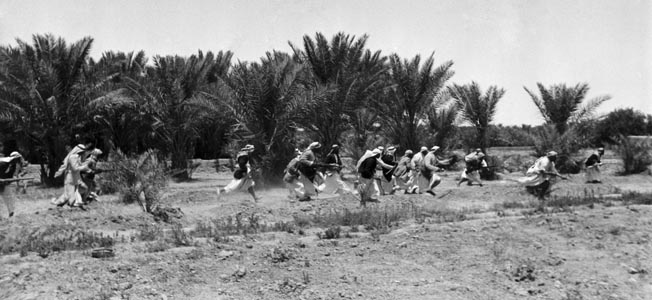
Base personnel mocked the Iraqi shelling, placing bets on when the water tower would be hit. “It did not seem possible that there were any gunners in the world who could fail to hit it—the slow death of the station would have started,” recorded the official history.
647 RAF Sorties
As Churchill ordered, Habbaniya struck back hard. “The garrison lived, worked and fought as if all the advantage were on their side, as if the rout of the enemy were only a matter of energy and time…,” the official history recalled. “Aircraft were fueled, loaded and started up behind the hangers; as soon as they were ready they taxied around the corner to the runways and took off under the enemy’s nose…. Methodically, the airmen attacked the gun positions, swooped on airfields from which hostile craft were already joining the fight, played havoc with supply columns moving up to the plateau from Baghdad.”
Wing Commander Dudgeon reported the British “dropped well over 3,000 bombs, totaling over 50 tons, and we had fired 116,000 rounds of ammunition. The ops-room had recorded 647 sorties, but we had completed, unrecorded, many more than that….”
On the ground, the King’s Own and the Levies joined in with nightly grenade-tossing raids into the Iraqi positions.
After four days, the Iraqis were finished. At dawn on May 6, 1941, the British could see them heading down the plateau to the east toward Baghdad, abandoning guns and ammunition. The British were not finished with the Iraqis. Five miles away, those who were retreating got entangled with a column of reinforcements.
“At about the same time, every available Oxford, Audax, Gordon, and Gladiator in Habbinya was let loose,” wrote Dudgeon. “We made 139 sorties and, when the last aircraft left, its pilot reported that the road was a strip of flames, several hundred yards long. There were ammunition limbers exploding, with cars and lorries burning by the dozen. We lost one Audax shot down.”
The Iraqis answered with a final air raid late in the afternoon, killing seven, wounding eight, and destroying two Oxfords, a Gladiator, and an Audax.
In London, Churchill cabled Smart: “Your vigorous and splendid action had largely restored situation.”
“Nice Baby You Handed Me on My 58th Birthday”
Habbaniya had not merely held but had inflicted over 1,000 casualties on the Iraqis, including 26 officers and 408 soldiers captured, and destroyed most of the Iraqi Air Force of 56 planes. As Glubb saw it, “The fantastic odds against the garrison of Habbaniya probably saved them, for the Golden Square were over-confident.”
The official history saw it more heroically: “The miracle of Habbaniya was achieved by coolness, by violent, unflagging labor, and by a measureless impudence.”
In restoring the situation, Churchill had more in mind than merely holding Habbaniya. He was determined to overthrow the Rashid ‘Ali regime in Baghdad. Even while the siege at Habbaniya went on, the prime minister and the chiefs of staff in London began a long-distance argument over invading Iraq with the Commander-in-Chief Middle East, General Sir Archibald Wavell, in Cairo.
On May 3, Wavell told the chiefs, “I have consistently warned you that no assistance could be given to Iraq from Palestine in present circumstances, and have always advised that a commitment to Iraq should be avoided…. My forces are stretched to the limit everywhere….”
The chiefs of staff responded the following day: “A commitment in Iraq was inevitable…. There can be no question of accepting the Turkish offer of mediation. We can make no concessions.”
Wavell then fired off a scathing retort. “Nice baby you handed me on my 58th birthday…Your message takes little account of realities. You must face facts. I feel it is my duty to warn you in the gravest possible terms that I consider the prolongation of fighting in Iraq will seriously endanger the defense of Palestine and Egypt…. I, therefore, urge again most strongly that a settlement should be negotiated as early as possible.”
“Settlement by negotiation cannot be entertained except on the basis of a climb down by Iraqis, with safeguard against future Axis designs on Iraq,” said the chiefs of staff. “Realities of the situation are that Rashid ‘Ali has all along been hand-in-glove with the Axis powers, and was merely waiting until they could support him before exposing his hand. Our arrival at Basra forced him to go off at half-cock before the Axis was ready. Thus there is an excellent chance of restoring the situation by bold action, if it is not delayed.”
Wavell finally bowed to the inevitable, cabling on May 13, “We will try to liquidate this tiresome Iraq business quickly.”
HABFORCE
Even while opposing the invasion, Wavell readied for it. On May 3, he handed preparations over to the commander in Palestine, General Henry Maitland Wilson. He was no more enthusiastic than Wavell. “More trouble, gentlemen, I am afraid!” he had announced to his staff. However, he quickly patched together a 5,800-man Habbaniya Relief Force (HABFORCE) under Maj. Gen. George Clark. To London, Wavell warned he could “only regard [HABFORCE] as [an] outside chance….”
Clark whittled HABFORCE to a 2,000-man spearhead called Kingston Column (KINGCOL). Despite its small size, KINGCOL had several unusual attributes. There were no fewer than three members of Parliament in it, one of whom, Somerset de Chair, in 1945 published an account of its march on Baghdad, The Golden Carpet.
KINGCOL’s commander, Brigadier Joseph Kingstone, “added to the colorfulness of the expedition,” wrote de Chair, by wearing a blue pajama top over khaki shorts at breakfast. Adding even more color were 250 men of the Arab Legion of Transjordan, a bedouin foreign legion led by seconded or retired British officers under contract. One of these was its commander, John Glubb, who wrote of the invasion in The Story of the Arab Legion in 1948.
John Glubb’s Arab Legion
Despite his blimpish appearance and name, Glubb had spent almost 20 years living among the bedouin and helping them police themselves, first for a decade during the Iraq Mandate, then in Transjordan’s service since 1930. De Chair described Glubb’s men as “dark faced, with long black shiny hair, wrapped about in buff robes and pantaloons, wearing gingham head-dresses with the Emir’s silver crown on the forehead and swathed in bandoliers of ammunition….We called them Glubb’s girls on account of their flowing robes.”
The Arab Legion’s primary role in the invasion was reconnaissance, and Glubb led it across the Transjordan border into Iraq a week ahead of the rest of KINGCOL, even while Wavell was quarreling with Churchill and the chiefs. The Arab Legion would take part in the invasion’s first action, at the fort at Rutbah 200 miles west of Habbaniya.
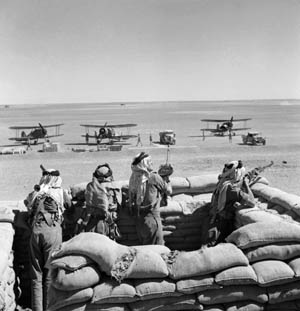
Glubb surrounded the fort on the morning of May 8, 1941, called in RAF support, then watched as aircraft passed over dropping a few bombs and circling. Then one plane flew lower, dropping a message that a white flag was raised in the fort. “This war was too easy,” wrote Glubb. “We had not yet fired a shot.”
The Legion would get its chance to fight. Glubb and his men advanced 200 yards. “But the gate remained obstinately closed, the high stone walls frowned upon us in silence,” Glubb later wrote. “Armed as we were with only small arms, there was nothing we could do against its high masonry wall. As I was standing with a few others looking at the fort from a hillock some 300 yards away, a machine gun suddenly stuttered from the ramparts, and the bullets whistled around. A man standing by me was wounded in the hand. We dropped into a wadi behind the hill. The campaign had begun.”
Glubb called again for air support. It took two hours for a single plane, then hours later for another, to return and drop a single bomb— which missed. “We lay down to sleep in disgust—this was not such fun, after all,” he remembered.
The next day passed in similar fashion with lackadaisical RAF bombing and desultory fire from the fort. That night, a relief convoy of 40 trucks rushed from the darkness into the fort before the Legionnaires had time to substantially react.
“To engage an enemy twice our strength, in the middle of the desert, with no support for 300 miles, seemed to me to be an unnecessary risk,” Glubb wrote. “We sent a few men to fire bursts at the fort for half an hour to keep the enemy employed, and we pulled out in the dark and set off westward across the desert.”
Advance of Armored Cars
In the morning, at Pumping Station 3 of the Iraq Petroleum Company pipeline, Glubb met up with an RAF armored car squadron that had just finished a two-day, 1,000-mile crossing from the Libyan desert. While the Legion refitted, the squadron rushed ahead. Early the next day, just as the Legion was catching up with the armored cars, it was found that the fort had been abandoned during the night. On May 12, KINGCOL crossed the frontier between Trans-jordan and Iraq, about 470 miles from Habbaniya and 55 miles east of Baghdad. The column reached Rutbah unopposed in 36 hours, set off again on May 15 and covered 160 miles that day, and finished just 40 miles from Habbaniya. Then Kingstone sent Glubb and the Legion to scout northward while he veered south by compass.
The result was recorded by Somerset de Chair: “The great supply monsters were everywhere floundering in soft sand. Those which had driven up the crisp ridges were now bedded down to the axles, while their crews labored in the desperate heat to dig them out…. The monstrous vehicle would lurch forward only to embed itself deeper into the sand 10 yards farther on. And the men would have to begin again.”
They got little sympathy from John Glubb, who wrote, “I have always found that one of the most noxious weapons in the desert is the prismatic compass. The fatal inclination of British officers to travel the desert on a compass bearing more often than not results in disaster.”
Kingstone finally admitted defeat, telling Glubb, “I shall want your dusky maidens to help us find an alternative route.”
They did, and the column reached Habbaniya on the evening of May 18, de Chair speeding ahead, “eager to catch my first glimpse of our first objective. At the edge of the plateau I came abruptly upon the cantonment. From the foot of the red sandstone spurs, a level mud aerodome stretched to the settlement itself, where hangars gave way to a maze of leafy avenues and the red roofs of bungalows.”
Passed without fanfare through the gate, de Chair later recorded, “Soon we were driving along smooth metalled roads, between pink-flowering oleanders. It was difficult to realize that I had entered a besieged settlement, as the spear of the relieving force.”
Luftwaffe in Iraq
However, before KINGCOL had reached Habbaniya, a dangerous new participant had entered the campaign in Iraq. “Just as the tail of the column had been moving off from the camp, four black fighters had roared across the desert drilling the lorries on the ground with bullets and cannon fire. They had disappeared as abruptly as they had come,” wrote de Chair. One of Glubb’s Legionnaires was killed, another wounded, as they stood firing back.
The fighters were not from the Iraqi Air Force, already mostly put out of action. They were Messerschmitt Me-110s of the Luftwaffe. The attacks continued daily at Habbaniya. While de Chair was working in an office on an intelligence report, “machine-gun bullets from a raiding Messerschmitt 110 were slapping against the walls outside in fine style.”
Bivouacking outside the base, Glubb wrote, “The Arab Legion, who had at last been persuaded to dig slit trenches, seemed almost to enjoy these breaks in the monotony. They would greet the tearing fighters with steady aimed bursts of automatic fire, and as the enemy roared away into the distance grinning faces would launch imprecations and shouts of defiance behind them.”
Two days into the siege at Habbaniya, Rashid ‘Ali’s brother, the Iraqi minister to Turkey, had formally requested military assistance at the German embassy. Hitler recognized the regime the next day. German aid got off to a bad start when the transport carrying Major Alex von Blomberg, leading the Luftwaffe liaison mission with the Iraqis, flew over Baghdad into an air battle between Iraqi and British fighters and landed dead in his seat with a stray bullet in his head. With the help of the collaborationist Vichy French in control of neighboring Syria, the Germans shipped 15,500 rifles with six million rounds of ammunition to the Iraqis and flew 28 fighters, bombers, and transports into northern Iraq.
On May 23, Hitler signed Directive No. 30. “The Arab Freedom Movement is, in the Middle East, our natural ally against England. In this connection the raising of the rebellion in Iraq is of special importance…. I have decided to push the development of operations in the Middle East through the medium of going to the support of Iraq.”
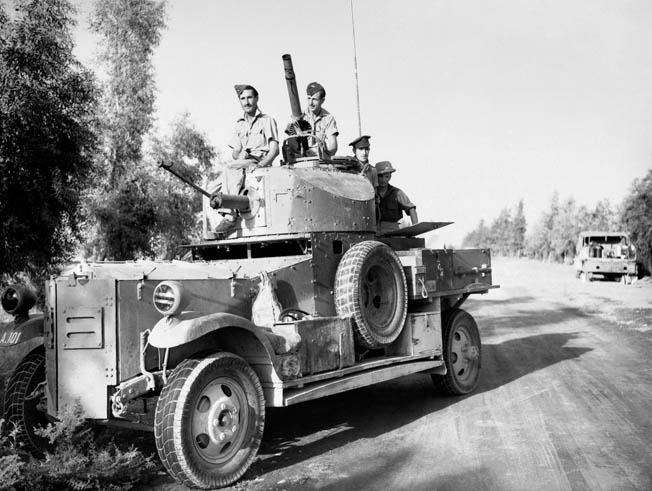
By then, almost all of the Luftwaffe aircraft had been destroyed on the ground by RAF raids from Basra. With the battle of Crete raging and the invasion of Russia weeks away, Hitler quickly lost interest in Iraq. Too late, Rashid ‘Ali came to realize this, telling Italian Minister Gabrielli that Iraq is “regarded as a pawn by Germany.”
55 Miles From Baghdad
There were still 55 miles to Baghdad, but the Iraqis worked to make the trek as difficult as possible for the British and their allies. As they were fleeing Habbaniya, the British opened the dikes on the Euphrates and flooded the surrounding area. Base troops had rehearsed for a crossing in the base swimming pool with skiffs and canoes from the base boating club. On the night of May 18, they crossed the river to take the main obstacle on the road to Baghdad, the town of Fallujah.
Beginning at 5 am on May 19, the RAF flew 134 sorties against Fallujah, dropping surrender leaflets along with 10 tons of bombs. Then the loyal Levies made a mid-afternoon shooting rush across a bridge into town and took Fallujah without a single casualty. Those Iraqi soldiers attempting to escape in civilian clothes stood out in army boots. They had not been able to find shoes.
The real battle for Fallujah came four days later, with a 2:30 am counterattack by an Iraqi brigade. When the Iraqis’ approach was spotted, Lt. Col. C.J. Hodgson of the King’s Own led a patrol to investigate and died holding them off single-handed with a haversack of grenades. Despite Hodgson’s heroism, the Iraqis were soon in control of the northeastern corner of town, planting machine guns on rooftops.
At Habbaniya, Clark ordered Kingstone across the Euphrates to take charge of the battle. Reinforcements were rafted across, and the Iraqis were cleared one house at a time by evening.
On May 28, Clark split the rest of KINGCOL for the final drive on Baghdad, advancing from two directions. One column, 500 men under Lt. Col. Andrew Ferguson along with Glubb and his Arab Legion, swept north to the Tigris River to flank the city. Leading the column, Glubb and his men reached Iraq’s second great river on the morning of May 29.
“We set out at dawn and drove across the flat open fields nearly to the banks of the Tigris,” he wrote. “Then we dismounted and infiltrated through the tall date gardens until we came out on the bank of the Tigris. The great river rolled past like a vast flood, forming swift eddies below the bank at our feet…. The rays of the sun filtered through the palms and threw a lacework of sun and shade on the ground. For a moment we forgot our month in the shadeless glare of deserts. The anxieties of war fell from us. We feasted on the magic scene.”
Panic in Baghdad
They were quickly shaken from their revelry. “Away to our right, on the main road, spurts of smoke and dust marked the bursting of shells,” wrote Glubb. “The hollow crump of the explosions came to our ears dimly on the scene.”
Ferguson was being held up by stiff resistance in the brickfields of Kadhimain, five miles from Baghdad, with one killed and five wounded. He ordered Glubb to continue north and cut the Mosul-Baghdad railway at the Meshahida station. He did, after meeting resistance of his own.
“The enemy’s fire seemed to be coming from a ditch lined with willows, about 200 yards away on the right of the road,” Glubb recalled. “I ran down our ditch and found Corporal Ferhan. I told him to follow an irrigation ditch which seemed to lead from our position to behind the enemy’s right, and to shoot him up from there. He looked around to where I was pointing, nodding his head and ran off down the ditch, picking up half a dozen men as he went. We now had two Vickers guns and 15 or 16 rifles in action. The enemy’s fire seemed to be petering out. Only now and then a single bullet came over with a whitt. Soon Corporal Ferhan appeared near the end of the row of willows. We stood up in our ditch. Some of the enemy climbed out of their trench and advanced toward us. They had two killed and two wounded. The remainder surrendered.”
When they reached the station the next morning, the Legion found it deserted.
The main column, including Clark, Kingstone, de Chair, and 750 men, struck eastward up the road from Fallujah. Along the way, de Chair rounded up a crashed Italian pilot and came upon an abandoned agricultural station with 10,000 chickens clucking about. On May 30, just three miles from Baghdad, the column came under heavy artillery and machine-gun fire. An Iraqi shell ricocheted off the mudguard of de Chair’s car without exploding, though shaking up his interpreter and driver.
From prisoners, Clark and Kingstone learned that Baghdad was in a state of panic with wild rumors that the British force was 50,000 strong. In a bluff, an interpreter called Iraqi headquarters to report British tanks. As night fell, Iraqi shelling continued, the RAF was bombing Iraqi positions north of the city, and Clark and Kingstone were faced with the grim prospect of house-to-house fighting with just 2,000 men against an estimated 13 infantry battalions and five artillery regiments.
Armistice
Then, as suddenly as it began, the Iraqi crisis ended. Shortly after midnight on May 31, 1941, an aide awakened Kingstone: “An odd sort of message has just come in. Two delegates from the Iraqi Army will appear on the Iron Bridge at 2 o’clock in the morning. Will we send two officers to meet them to discuss terms of Armistice?”
Having lost their gamble with Hitler and their nerve along with it, Rashid ‘Ali and the Golden Square were at that moment on the only road still open out of Baghdad, heading east to Iran. Rashid ‘Ali made it all the way to Berlin. Except for a brief return in the late 1950s, he spent the rest of his life in exile, dying in Beirut in 1965. The colonels of the Golden Square got no farther than Iran and Turkey. Over the next four years they were tracked down, returned to Iraq, and publicly hanged.
To initiate the terms of surrender, de Chair was driven blindfolded into Baghdad to get Ambassador Cornwallis. He, Clark, and two delegates from the office of the mayor of Baghdad negotiated a simple armistice while crammed in a car. As de Chair noted, Baghdad was “so far the only city of renown captured by ourselves during the opening hazards of the Second World War.”
To de Chair’s annoyance, British forces were kept out of Baghdad pending the regent’s return. “Having fought our way, step by step, to the threshold of the city, we must now cool our heels outside. It would, apparently, be lowering to the dignity of our ally, the Regent, if he were seen to be supported on arrival on British bayonets.”
In the resulting vacuum, anti-Semitic rioting and looting broke out, with 150 Jews killed.
A Bold but Forgotten Campaign
Despite the finish, de Chair, noted of KINGCOL: “For it is no ordinary army that can cross a waterless desert for the first time in history and deliver at the end of 700 miles of desert a punch which sends a well-equipped army of four divisions reeling into armistice.” He later directed British vehicles when they finally rolled into Baghdad, displaying his celebrated dented mudguard to the regent and young King Faisal II, who had spent the coup and campaign quietly on a royal estate outside Baghdad with his British governess.
Glubb preferred to rush home. Like an executive or salesman back from a business trip, he had to persistently knock at his own door at 3:30 am to be let in. Two months to the day he fled, Emir Abdul Ilah returned to Baghdad. In October 1941, Nuri as-Said was reinstated as prime minister and Iraq declared war on the Axis. The British followed up by driving the Vichy French out of Syria. Glubb and the Arab Legion would fight again, and de Chair was critically wounded.
In July 1941, Churchill told Parliament: “If anyone had predicted two months ago, when Iraq was in revolt and our people were hanging on by their eyelids at Habbaniya and our ambassador was imprisoned in his embassy in Baghdad, and when all Syria and Iraq began to be overrun by German tourists, and were in the hands of forces controlled indirectly but none the less powerfully by German authority—if anyone had predicted that we should already, by the middle of July, have cleaned up the whole of the Levant and have reestablished our authority there for the time being, such a prophet would have been considered most impudent.”
The latter-day Lawrence, John Glubb, saw it differently: “After all, I could not get myself to regard all this business as a genuine war.”
History tends to agree with Glubb. Despite the threat that a pro-Nazi Iraq would have been for the British position in the Middle East in World War II, the Iraqi campaign was squeezed from memory between the legends of the Desert Fox and the Desert Rats of the Battles of Tobruk and El Alamain.
In 1958, there was another coup in Baghdad. King Faisal, former Regent Abdul, and every member of the royal family down to infants were murdered. Nuri as-Said, still prime minister, tried to escape dressed as a woman like Abdul had but was killed by a mob and his body dragged through the streets behind a jeep. The coup began the chain of events that led to the rise of Sadaam Hussein and ended with another army marching on Baghdad.
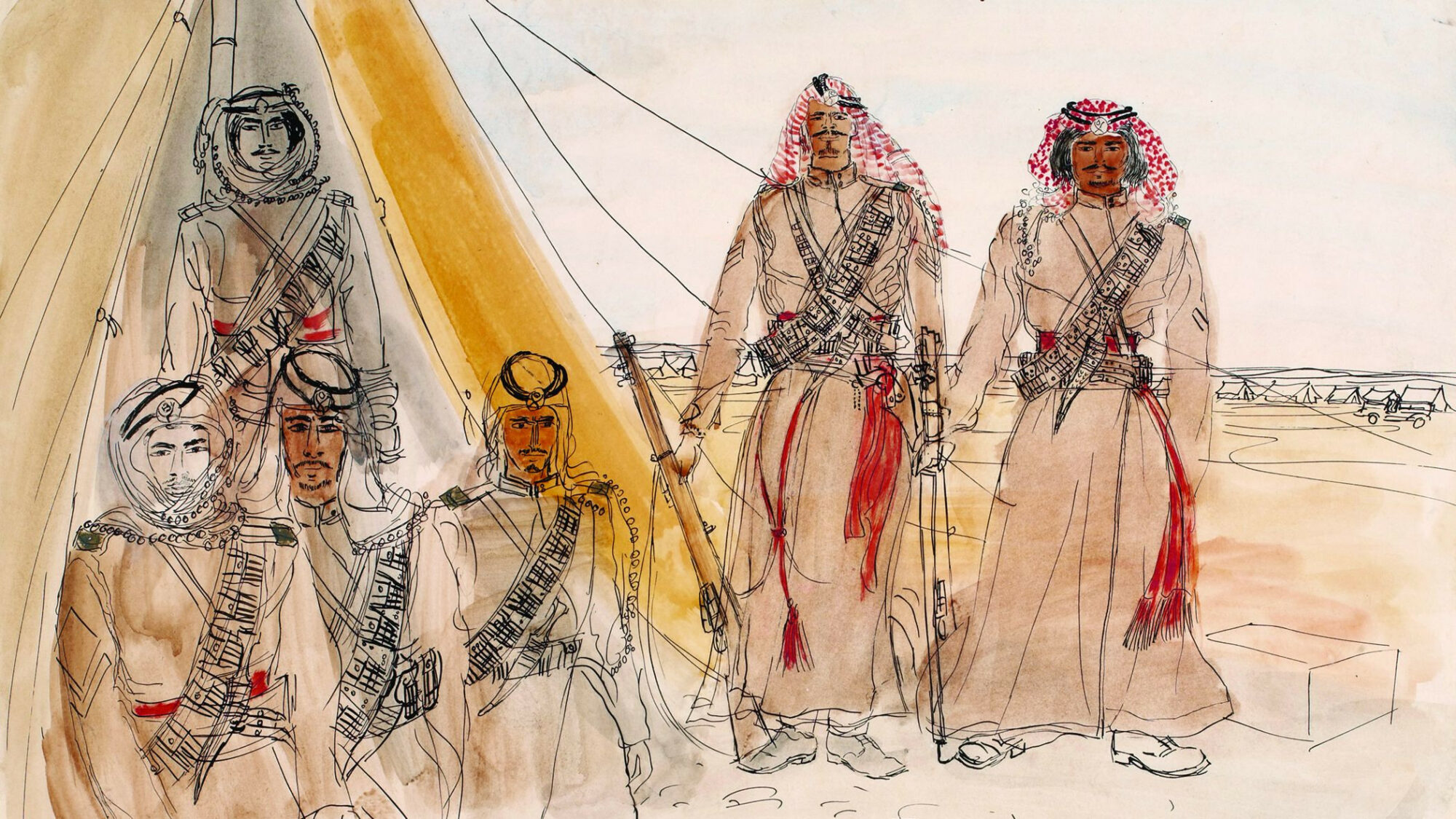
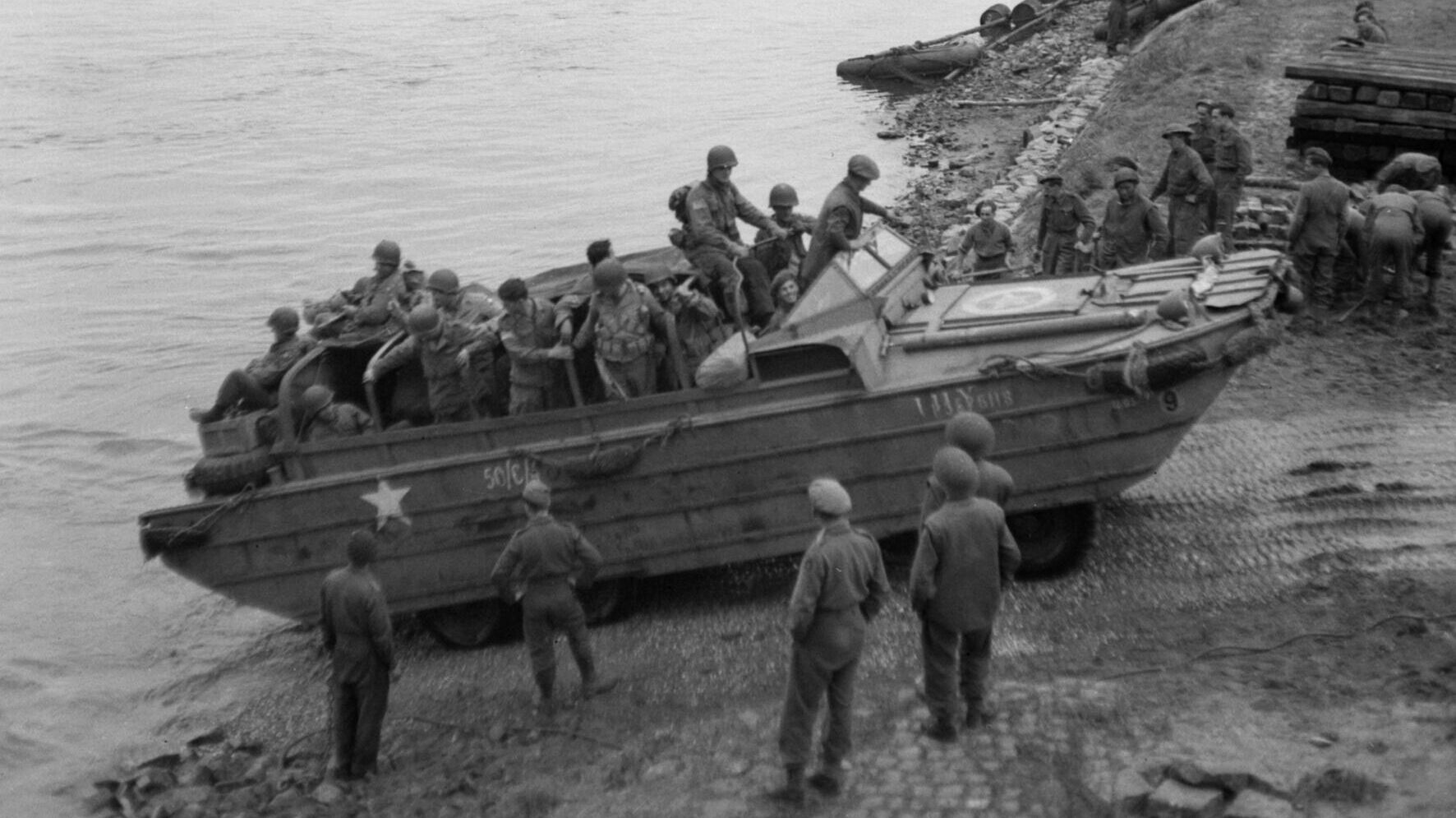
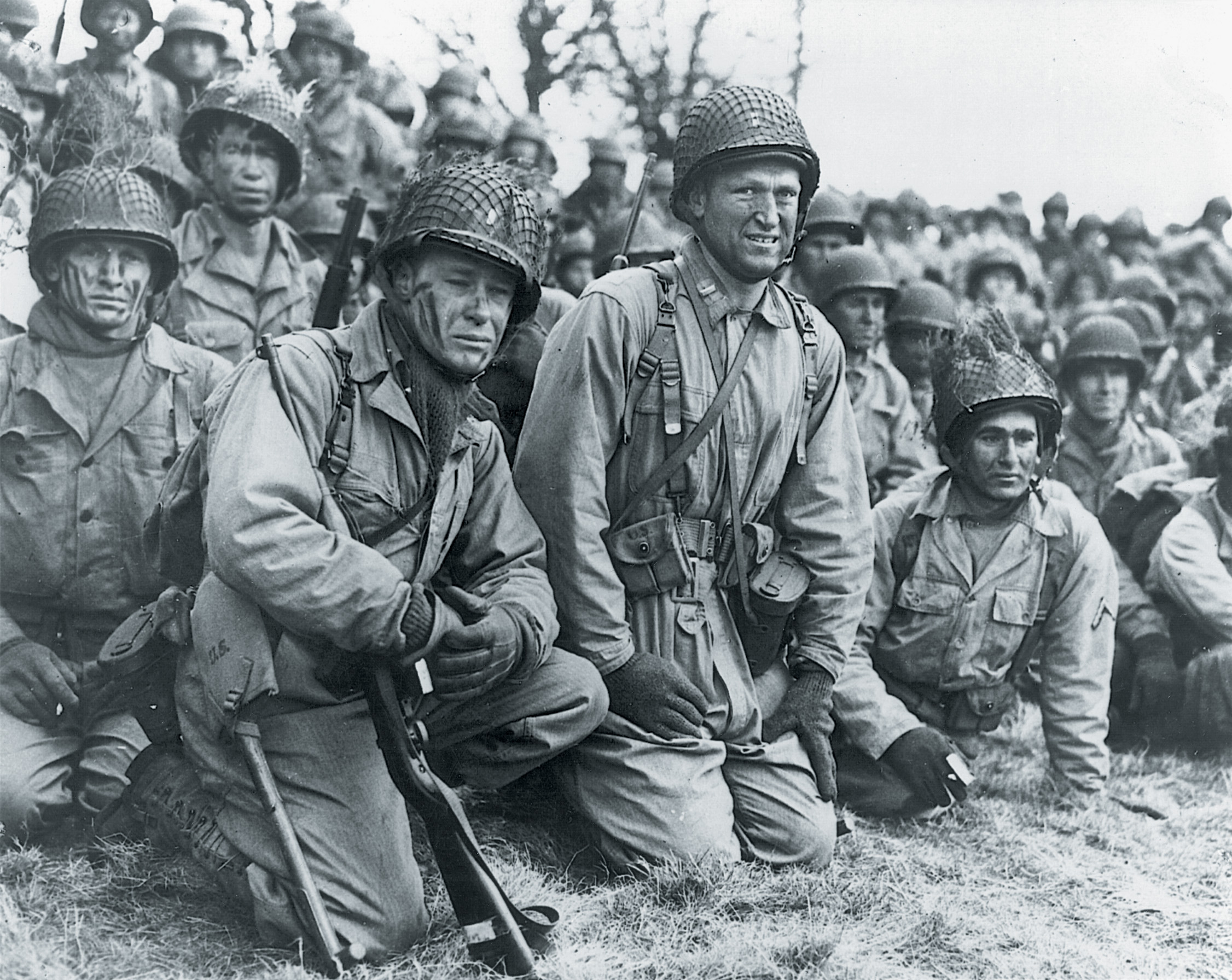
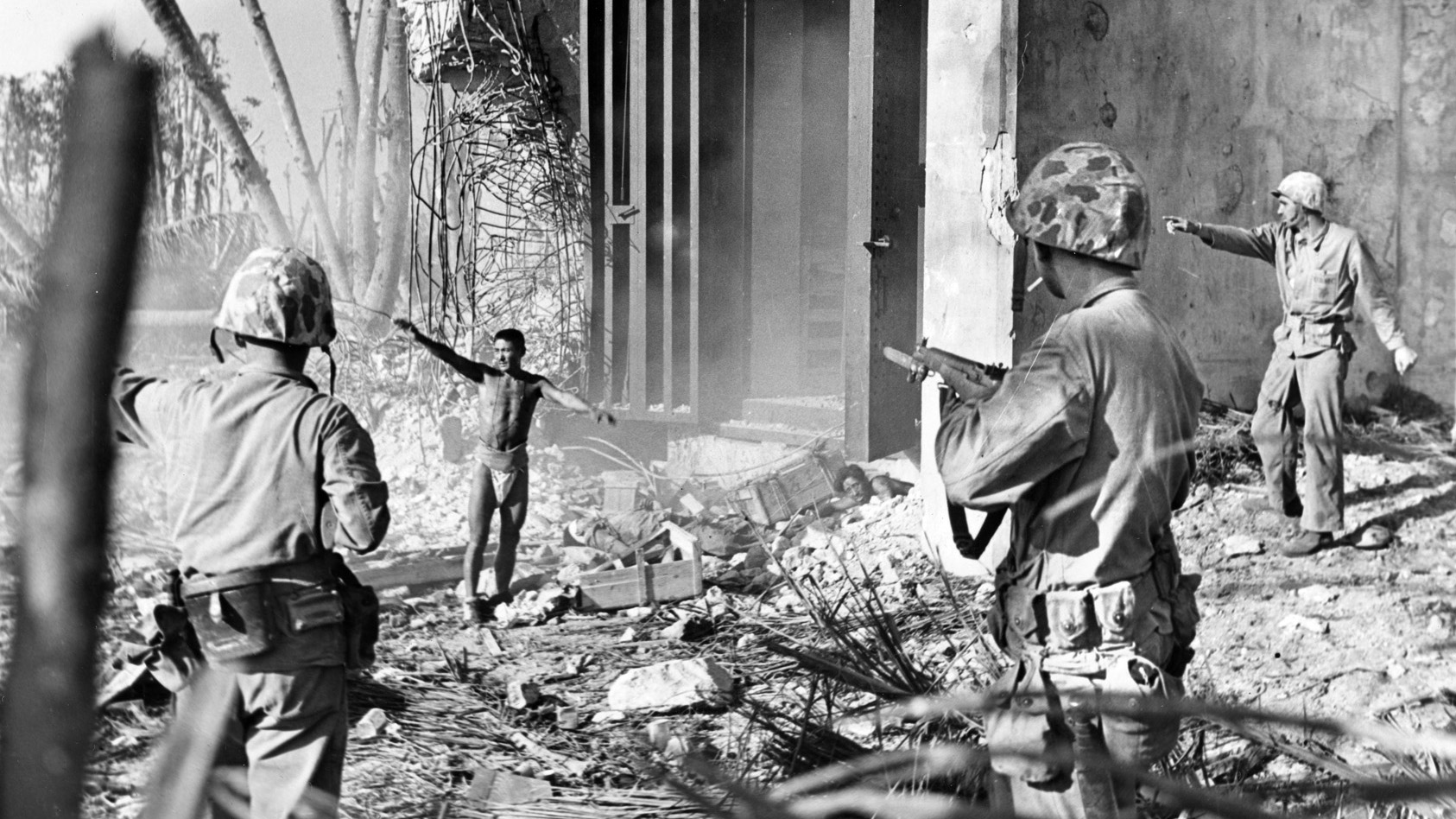
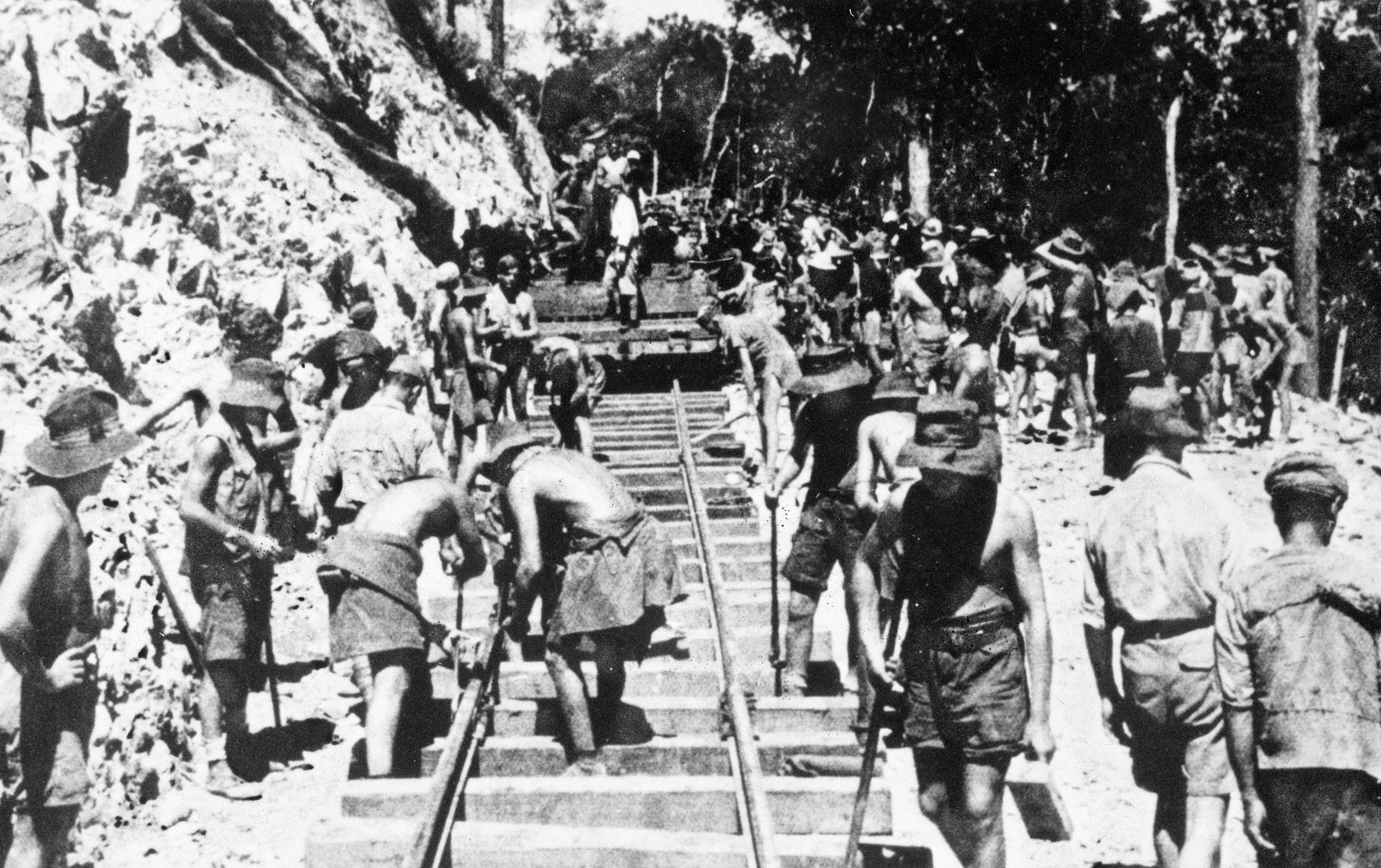
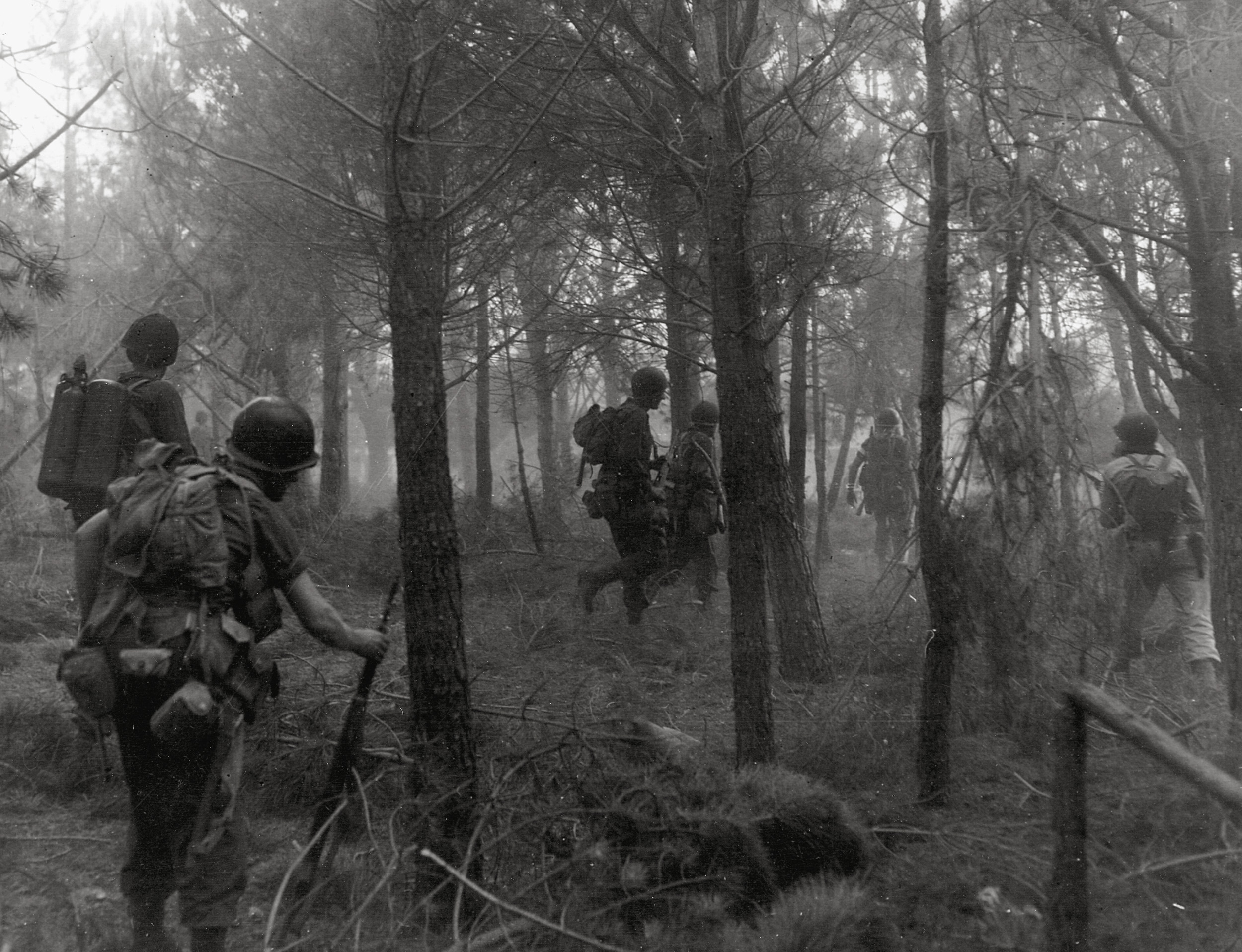
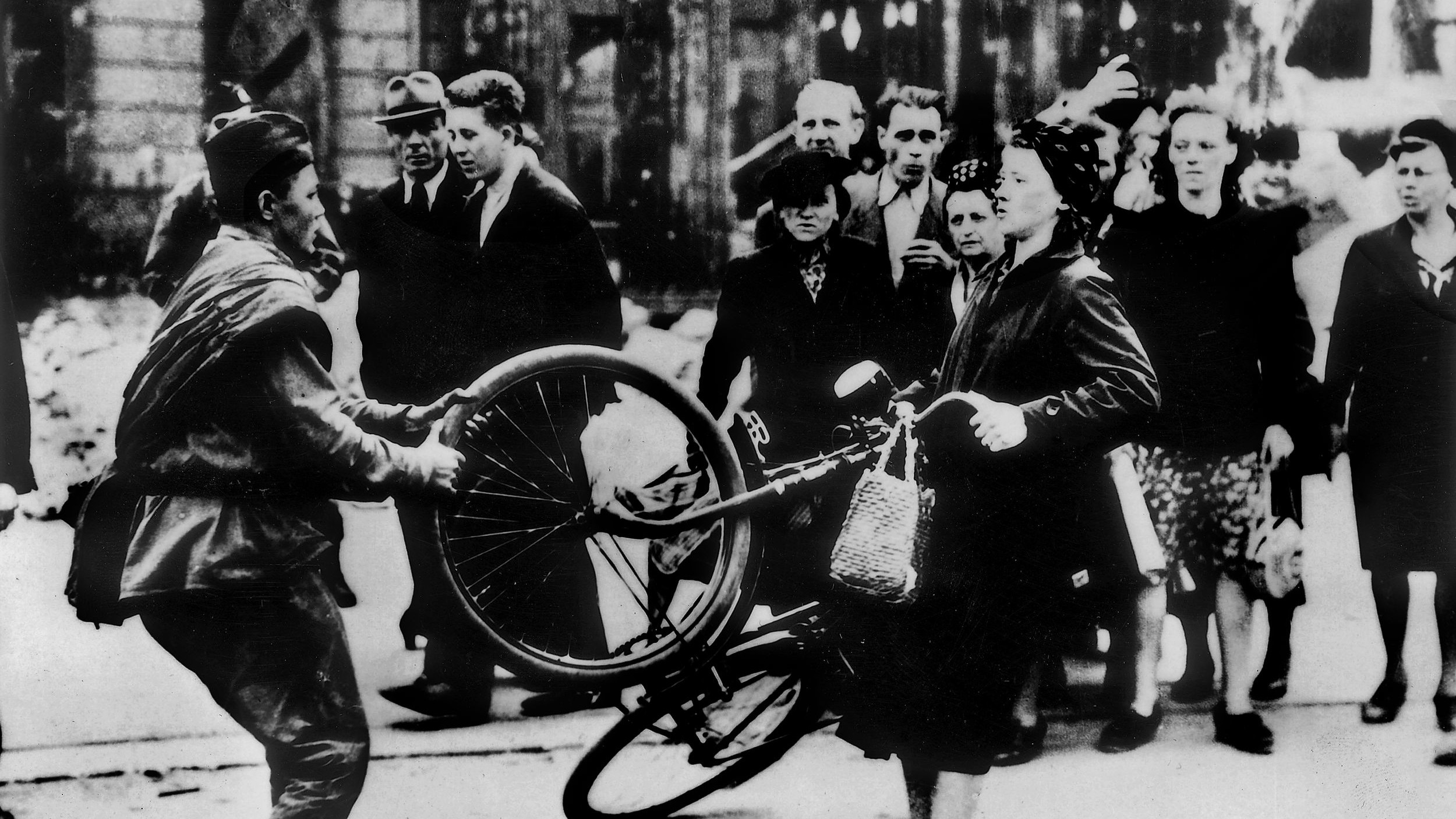
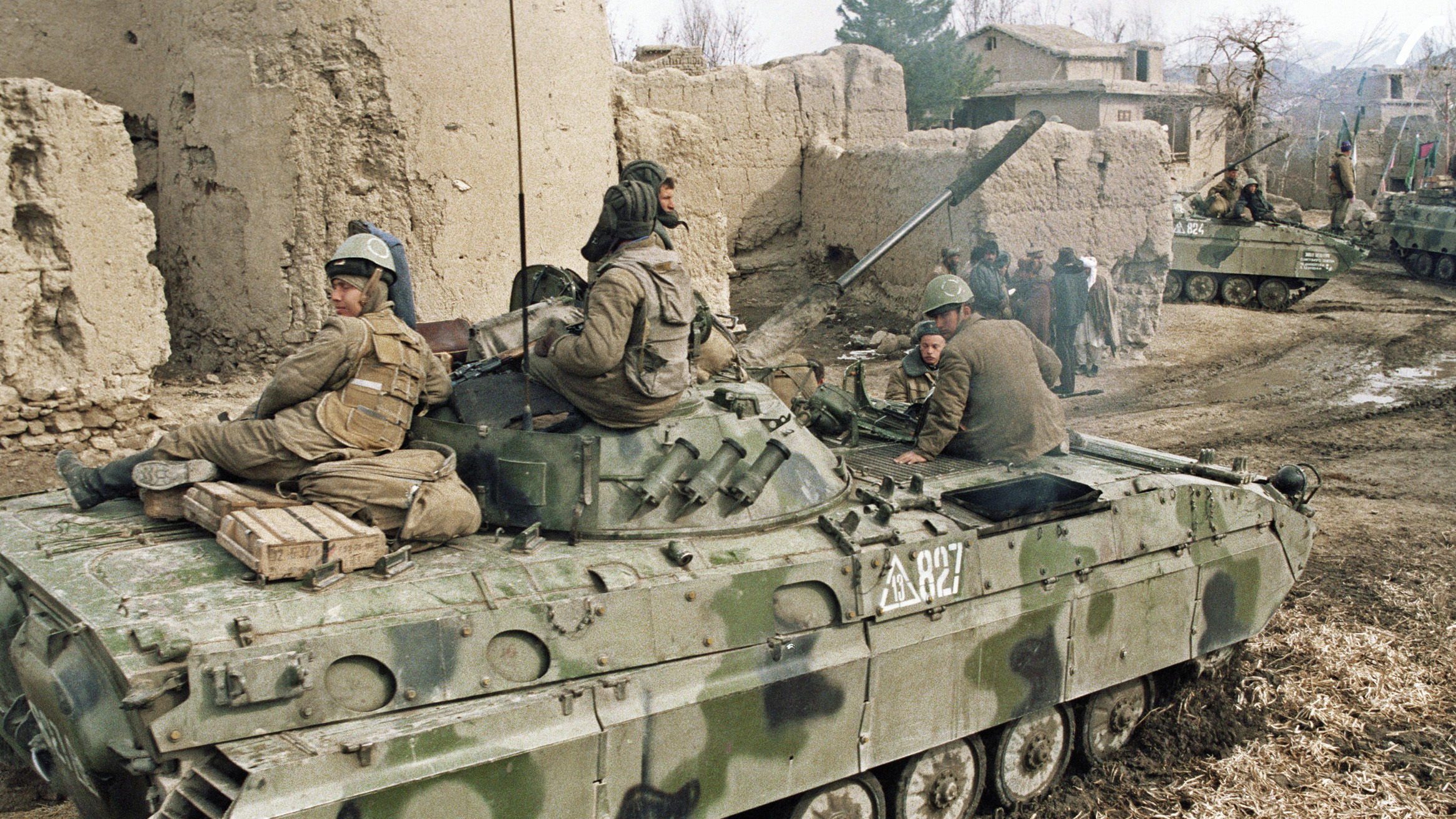
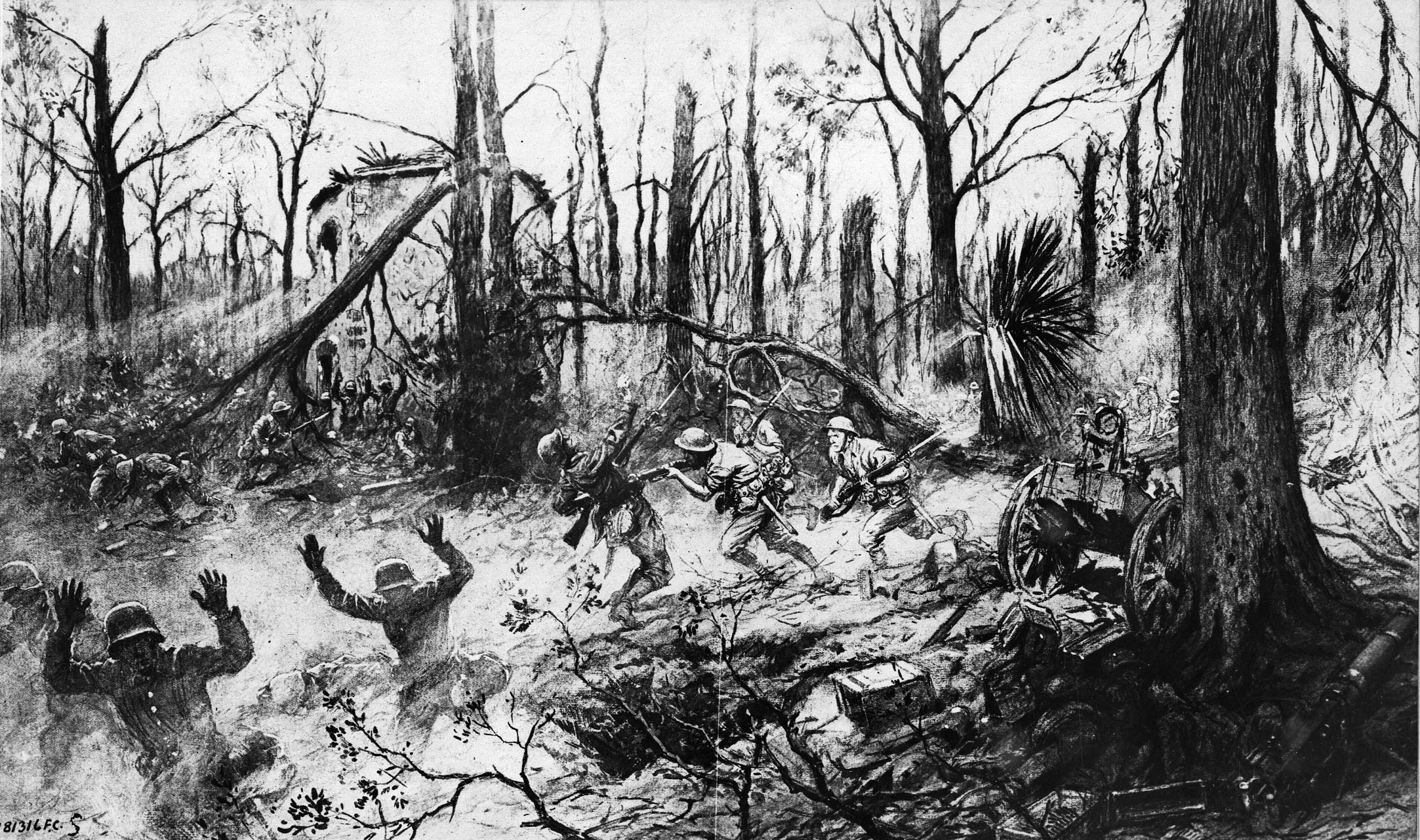
Join The Conversation
Comments
View All Comments